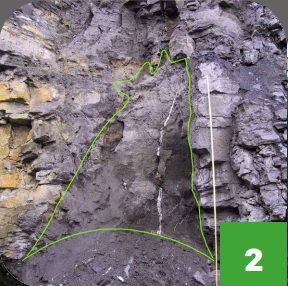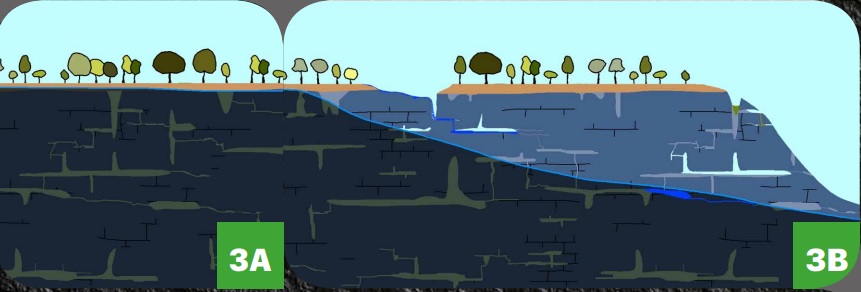

Cave formation : When rocks become ghosts
A ROCK IS MADE UP OF DIFFERENT COMPONENTS : FOSSILS, GRAINS OF SAND, LARGE CRYSTALS (CLASTS), BOUND TOGETHER BY CEMENT.
When exposed to rain, the rock is subject to chemical attack by the seepage water, in a process known as alteration. Alteration has a greater effect on the cement than on the clasts, however. The result is altered rock that resembles a sponge, known as ghost-rock. This process takes place in the phreatic (saturated) zone of the massif, where groundwater flows slowly. Beneath the massif lie large volumes of this limestone sponge filled with the residue of the chemical attack : residual alterite.These ghost-rocks subsequently find themselves in the vadose (unsaturated) zone of the massif following uplift of the region. The rivers incise their valleys and may be captured in the ghost-rocks. Underground rivers are formed by erosion of the residual alterite and gradually a cave forms.
FIG 2 Ghost-rock in the Gauthier-Wincqz quarry, marked out by the green line, forming a distinct volume in the rock mass. The residual alterite is friable, but the structure of the rock remains unchanged : strata, veins, fossils.
DIAGRAM OF KARST EVOLUTION FROM GHOST-ROCK TO UNDERGROUND RIVER STAGE.
The figure 3A represents the status of a limestone massif before the incision of valleys. The ghost-rocks are formed in the phreatic layer. The alterite is still present.
The figure 3B represents the current status of the limestone massif. As the valleys deepen, they depress the water table. The underground water is able to mechanically erode the residual alterite from the ghost-rocks.

